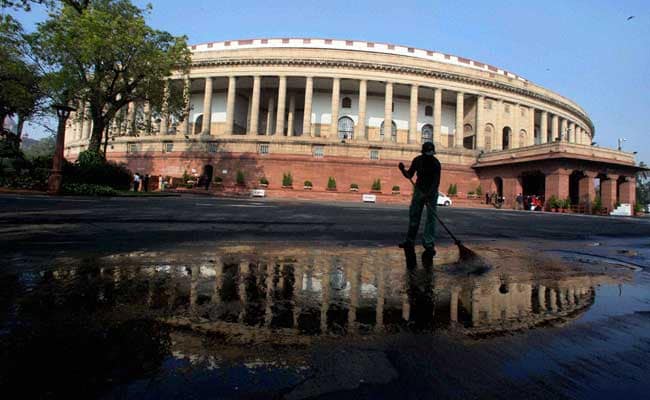
In a significant trend, the strike rate of turncoats in the Lok Sabha elections has witnessed a sharp decline over the years, with the 2019 polls recording the lowest figure in five decades. Turncoats are politicians who switch parties ahead of elections, and the strike rate refers to the percentage of turncoats who win.
Analysis of election data reveals that the 2019 general elections had a mere 14.87 per cent strike rate for turncoats, a decline of over 34 percentage points from the 1967 polls, which had a 48.94 per cent success rate. Specifically, in 2019, only 19 turncoats won out of 195 contestants, whereas in 1967, 23 turncoats won out of 47 contestants.
Declining Turncoat Strike Rates
Indian politics has long grappled with the phenomenon of turncoats, politicians who switch parties ahead of elections. However, an analysis of Lok Sabha election data from 1967 to 2019 paints a clear picture of the declining success rate for these turncoat candidates over time.
The strike rate, calculated as the percentage of turncoat winners relative to the total number of contestants, peaked in 1977 at 68.94 per cent . This surge followed the post-Emergency period, during which Prime Minister Indira Gandhi imposed a state of emergency from 1975 to 1977, likely influencing political realignments and the subsequent success of turncoats.
However, since that peak, the trajectory has been largely downward. The following decades saw strike rates fluctuating between 14 per cent and 30 per cent , with a slight bump in 1989, possibly due to the political instability characteristic of that era. The 2000s continued this downward trend, with strike rates hovering in the teens: 14.08 per cent in 2009 and 14.45 per cent in 2014. Notably, the year 2019 registered the lowest strike rate in five decades, with just over one-tenth of turncoats winning.
Congress vs. Bhartiya Janata Party
In the post-independence era, Indian politics witnessed the absence of the BJP, with precursor parties like the Bhartiya Jana Sangh contributing to the opposition. During this time, the Congress party, led by Indira Gandhi, held considerable sway over turncoats, as evident from their 90.91 per cent win rate in 1967 and 82.61 per cent in 1971. However, this grip loosened following the JP movement, resulting in a dip to 45.83 per cent in 1977. With the emergence of Rajiv Gandhi, Congress maintained a moderate success rate for turncoats, ranging from 40 per cent to 81.25 per cent .
The tumultuous period between 1996 and 1999, marked by political realignments, saw a shift. The BJP turncoats achieved a 33.33 per cent success rate in 1996, while Congress's rate plummeted to 15.79 per cent . During the UPA rule (2004-2014), Congress recovered slightly, with turncoats winning 44.44 per cent in 2004. However, the rise of Narendra Modi propelled the BJP's rise to power, with their turncoat success skyrocketing to 66.67 per cent in 2014. Nonetheless, the overall trend indicates a decline in the effectiveness of turncoats, with Congress's success rate plunging to just 5 per cent in 2019-a stark contrast to their once-dominant position.
The data illustrates the dynamic nature of political loyalties in India, with BJP turncoats outperforming their Congress counterparts during the Modi era. However, it also underscores a broader decline in the strike rate of turncoats across the political spectrum.
Rise and Fall of Regional Forces
The 1996 Lok Sabha elections were a pivotal moment for regional parties, as they rose to prominence and played a crucial role in forming coalition governments. Mayawati's Bahujan Samaj Party (BSP) briefly supported and then retracted support from Atal Bihari Vajpayee's government, causing its collapse just 13 days after taking office. This incident highlighted the power dynamic of coalition politics.
Other regional parties also held significant roles; Mulayam Singh Yadav of the Samajwadi Party served as Defence Minister, Lalu Yadav of the RJD became Railway Minister, and Chandrababu Naidu of the TDP was the convenor for the United Front, a coalition of 13 parties that governed from 1996 to 1998. Naidu's influence extended beyond this period, as the TDP-BJP alliance dominated Andhra Pradesh in the 1999 elections, leading Naidu to extend issue-based support to the NDA government.
However, the data suggests a shift in fortunes for these regional powerhouses. The "Modi wave" seemed to erode their influence, and the decline in the success rate of turncoat candidates indicates a potential shift in voter preferences away from these regional parties. This evolution in Indian politics underscores the changing dynamics and the emerging challenges faced by once-dominant regional forces
Track Latest News Live on NDTV.com and get news updates from India and around the world

